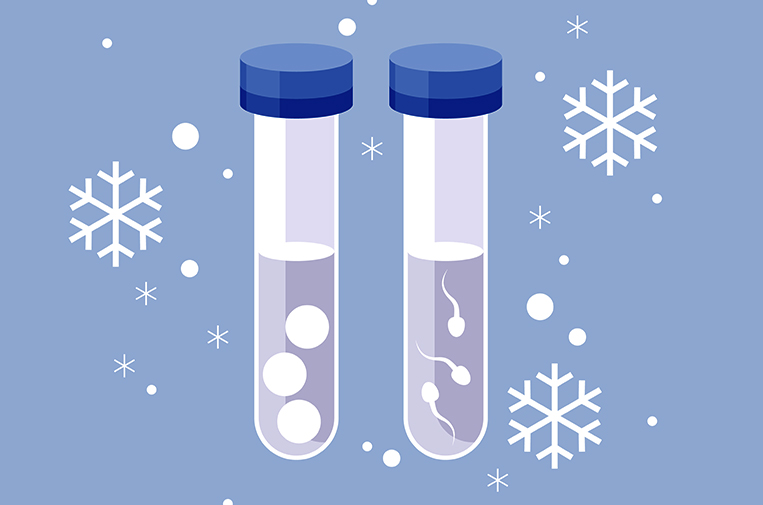1. How are embryos frozen and thawed?
Embryos may be frozen at different times after fertilization. At RSC embryos are frozen five or six days after the sperm and eggs are combined.
The freezing or vitrification process at the blastocyst stage causes minimal to no harm to the embryo. At RSC Bay Area, we have an embryo survival rate of 98 percent.
The embryo is loaded into a small straw, and placed in the cooling chamber of a controlled rate freezer. The embryo is cooled slowly to maximize water extraction from the embryo and to prevent the formation of large ice crystals that can damage the embryo. The entire process takes several hours and the frozen embryo(s) are stored in liquid nitrogen at -1960 C.
Embryo thawing is simply a reversal of the freezing procedure. The embryos are removed from the storage tank and are warmed to room temperature in 30 seconds. For the next 30 minutes, the embryos are stepped through four different solutions until the cryoprotectant, the chemical used in the freezing solution to protect the eggs, is gone and all the water has been replaced. This thawing procedure is performed at room temperature. When completed the embryos are warmed to body temperature (37°C). Thawed embryos are ready for transfer to the mother 40 minutes after their removal from storage.
2. How long can my embryos be stored?
No one knows the maximum storage period. Procedures for human embryo freezing were developed in 1984 and went into widespread use in the late 1980s. To date, the longest time a human embryo remained frozen and successfully created a child is 19 years. Patients who store embryos for this long usually do not return for them. RSC has stored an embryo for 18+ years and successfully assisted a patient in having a child.
3. How am I going to be billed for storing my embryos?
A precise inventory is maintained for all embryos in storage by the laboratory staff. Patients with embryos in storage are billed monthly. It is the patient’s responsibility to notify RSC of changes to address, email or credit card. We request a credit card be placed on file for automatic billing.
4. What are my options if I/we no longer wish to store the embryos?
Patients who no longer wish to store their frozen embryos have several options. Frozen embryos may be discarded as medical waste. They can be released to the IVF lab for quality control & staff training and then discarded after a few days. Typical research topics include new techniques for freezing or thawing embryos, new ways of growing embryos in the laboratory, or understanding genetic composition of the embryos. The third option is that embryos may also be donated to another person or couple.
5. How are embryos discarded?
To discard frozen embryos, a consent form must be signed by both partners, (as applicable), notarized, or witnessed by RSC staff. After a 60-day waiting period, at least two embryologists fulfill the patients’ wishes. They locate the embryos in the storage tank and carefully confirm the identity. The embryos are thawed and discarded. The embryologists initial and date the consent form and other storage documents, attesting that they performed and witnessed the disposition according to the patients’ wishes. The paperwork is kept in the laboratory files. If requested on the consent form, written confirmation of the disposal of the embryos is sent to patients.





